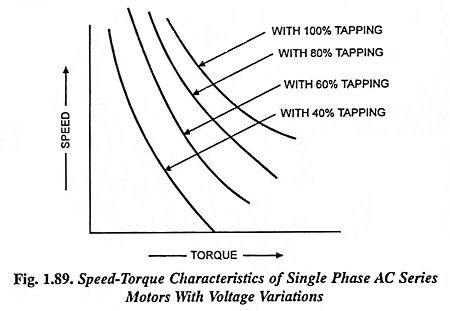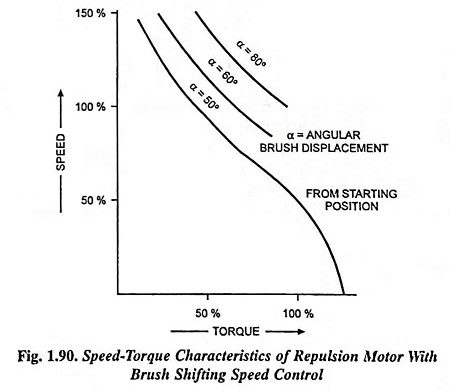Speed Control of AC Commutator Motors:
Speed control of ac commutator motors can be had either by varying the applied voltage or by movement of the brushes round the commutator. The former method makes use of tappings on a transformer or, occasionally, a series resistor or inductor so as to provide variation of voltage in steps, while brush shifting provides a gradual control throughout the range.
In case of a single phase ac series motor, the speed control can be accomplished, when required, only by voltage variation because it operates with fixed brush position. Transformer tappings provide variation between zero and maximum speed, as depicted in Fig. 1.89, without any appreciable additional loss such as would occur with series resistance. The latter method is employed, only when speed control is required very occasionally, and where capital cost is the prime importance.
In case of repulsion motors, brush shifting is the simplest method of speed control for a speed range between about 0.5 and 1.1 times synchronous speed, but beyond this range voltage variation control is preferred due to commutation difficulties. Speed-torque characteristics with different brush positions are shown in Fig. 1.90.
In case of 3-phase series motors, brush shifting is the most economical method of speed control and provides a range of 3 or 4 to 1 with characteristics similar to those of repulsion motors.

